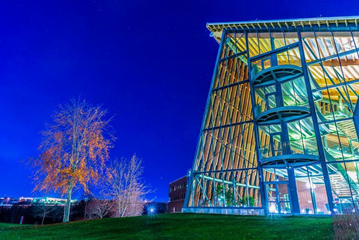

On the 27th of January 2021, the European Parliament voted that blue hydrogen produced from natural gas with CCS can be used as a bridge on the journey to the eventual widespread use of green hydrogen.
The UK has an agnostic position on blue and green hydrogen to ensure that hydrogen infrastructure can develop at-scale. That approach allows for a range of technologies from electrolysers to autothermal and steam methane reformers, and CCS.
The use of blue hydrogen will stimulate progress towards deep decarbonisation in many carbon-intensive sectors. It will also drive investment in integrated blue hydrogen production schemes. These will require a holistic approach to process optimisation across reformers, air separation units, pipelines and carbon capture – the main technologies required for blue hydrogen production.
A new paradigm must emerge
The most common means to produce hydrogen today is from natural gas, using steam methane reformers. Carbon dioxide (CO2) is generated from the process chemistry and energy requirements. ‘Blue hydrogen’ is produced through the integration of carbon capture with steam methane reformers (SMRs) or autothermal reformers (ATRs).
The captured CO2 may either be captured and utilised (CCUS) or captured and stored (CCS) in permanent underground storage in natural geological formations.

SMRs have benefited from 40 years of continuous improvement and optimisation. ATRs are newer but have had more than a decade of commercial scale operation to allow fine tuning. In some cases, SMRs and ATRs are integrated in ‘combined reforming’ or ‘two stage reforming’.
CCS is also an established technology. In Europe, Equinor commenced capture and sequestration of CO2 on the Sleipner West field in the Norwegian sector of the North Sea more than 20 years ago. The components of a CCS scheme, from the absorption tower to the multi-stage CO2 compressor with integrated drying system, are highly developed.
Beyond Norway, CCS has also been used in Australia, Canada, and the US for many years. Most major CCS schemes implemented up to now have been retrofits onto carbon-intensive processes, such as decarbonisation of existing coal fired power plants; carbon capture from existing steam methane reformers; and amine wash systems on existing ammonia plants.

Reforming technologies and CCS have been optimised, but they have been optimised in parallel. They have never been optimised synergistically in an integrated process. For new investments, a paradigm shift is required: blue hydrogen production must be optimised in its own right.
United in a vision of carbon-neutrality
More than six years after the Paris Agreement, President Biden signed a decree that recommitted the US back into to that agreement after several years of absence. A carbon-neutral future must materialise, and John Kerry has been made responsible for delivering the vision.
Scores of other nations are signatories to the Paris Agreement. The UK has embraced blue hydrogen as part of its vision to mitigate the effects of climate change. A project in East Yorkshire known as Zero Carbon Humber is an embodiment of the UK’s drive to use blue hydrogen to enable a greener future.
Henrik Anderson is a Vice-President, responsible for Low Carbon Solution Technology at Equinor. He says that, “Equinor sees a future for both blue and green hydrogen, but each will be developed at different pace and scale based on regional feedstock availability, geology, markets and policies. However, to develop the hydrogen value chain at scale and kick-start the hydrogen economy, we believe that blue hydrogen will play a vital role.”
East of the Humber, in the North Sea, Equinor is also heavily invested in large-scale renewable power generation. Its wind farms on the Dogger Bank will generate more than 3 GW of renewable electricity when complete.
The North Sea is also integral to blue hydrogen production for the Zero Carbon Humber project because it is the source of natural gas to feed the reformers. The project will also use a huge saline aquifer known as ‘Endurance’ to permanently store the CO2 that is to be captured from heavy industries on the banks of the Humber.
(To be continued)